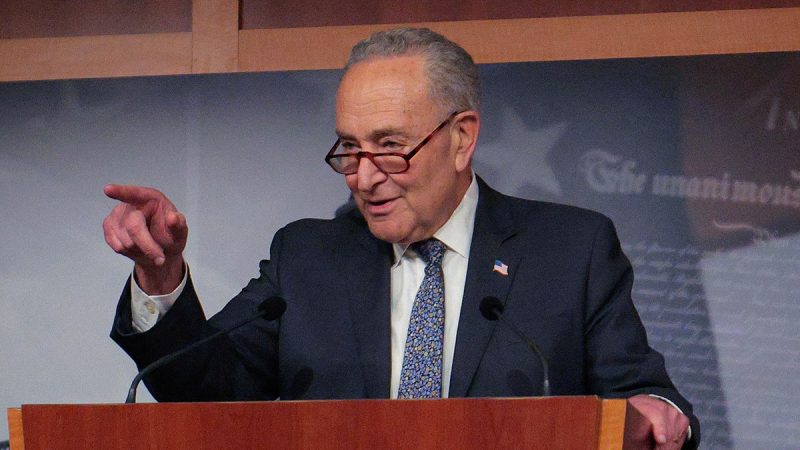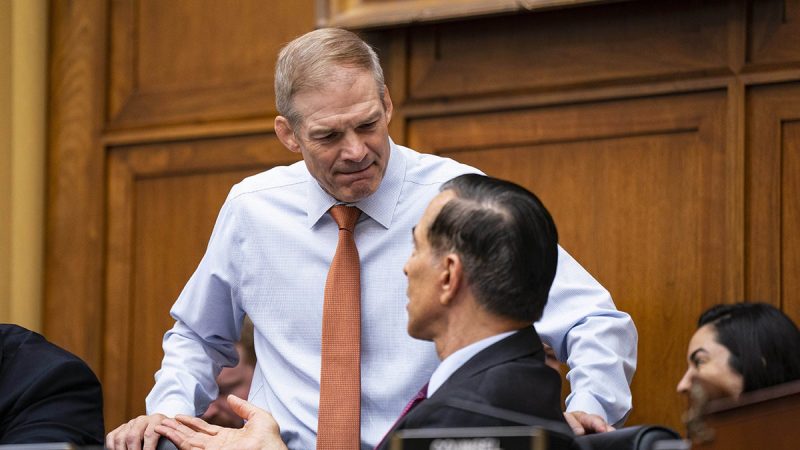
Senate Republicans coalesced to pass President Donald Trump’s colossal ‘big, beautiful bill’ early Tuesday morning.
Senate Republican leaders and the White House have pitched the legislative behemoth as a means to turbocharge the economy, root out waste, fraud and abuse in a slew of federal programs, and to make crucial investments in defense and Trump’s border and immigration priorities.
Meanwhile, Senate Democrats have bashed the bill as a deficit-ballooning monstrosity that would boot millions of Americans from their healthcare and rollback key Medicaid, food nutrition assistance and green energy provisions ushered in by the Obama and Biden administrations.
So what’s in Trump’s bill? Below, Fox News Digital breaks down key proposals in Senate Republicans’ ‘big, beautiful bill.’
Tax cuts
The bill seeks to permanently extend Trump’s 2017 Tax Cuts and Jobs Act, which a House GOP memo from earlier this year said would avoid a 22% tax hike for American families at the end of this year.
It also includes tax cuts specifically tailored to the middle and working-class, like allowing people to deduct taxes on up to $25,000 of tipped wages. That deduction would begin to phase out for people making $150,000 per year or $300,000 as a married couple.
The Senate bill would also allow people to deduct up to $12,500 in overtime pay under the same income guidelines. Both the tipped and overtime wage deductions would be available through 2028.
Another temporary tax break through 2028 would allow people to deduct interest paid on their car loans.
For seniors aged 65 and older, the bill would give an additional $6,000 tax deduction through 2028.
SALT
The legislation increases the current cap on state and local tax (SALT) deductions, a benefit primarily geared toward people living in high-cost-of-living areas like New York City, Los Angeles and their surrounding suburbs.
The current SALT deduction cap would be raised to $40,000 for five years, before reverting down to $10,000 – where it stands now – for the subsequent five years.
Blue state Republicans fought for the increase, arguing it’s an existential issue for a bloc of lawmakers whose victories were decisive for the House GOP majority. However, Republicans from redder areas have criticized SALT deductions as giveaways to high-tax states as a reward for their progressive policies.
Medicaid
Medicaid cuts have proven the biggest pain point among Republicans, though many of the changes that have been proposed are widely popular. Cuts to the widely used healthcare program account for roughly $1 trillion, according to recent analyses from the nonpartisan Congressional Budget Office (CBO).
The CBO found that under the Senate GOP’s plan, nearly 12 million Americans could lose their health insurance.
Stricter work requirements have been the crown jewel for the GOP. The bill would require able-bodied, childless adults between the ages of 18 and 64 to work at least 80 hours a month to maintain their benefits, or by participating in community service, going to school or engaging in a work program.
However, there are more divisive changes, like tweaks to the Medicaid provider tax rate. The rate change would, year-by-year, lower the provider tax in Medicaid expansion states from 6% to 3.5%. The plan was tweaked to comport with Senate rules and now starts in fiscal year 2028.
Just ahead of the bill’s passage in the Senate, Republicans doubled a rural hospital stabilization fund pushed for by lawmakers concerned that the changes to the provider rate would shutter rural hospitals around the country.
That fund was boosted to $50 billion, half of which will be distributed through grants, in chunks of $10 billion each year.
Republicans also removed a ban on Medicaid benefits funding transgender healthcare, largely because it would not have complied with Senate rules.
SNAP
Senate Republicans’ bill also includes cuts to the supplemental nutrition assistance program (SNAP), formerly known as food stamps.
Like tweaks to Medicaid, Republicans pushed for work requirements for SNAP for able-bodied, working-age adults between the ages of 18 and 64 years old, and for parents with children over the age of 7.
The bill would also shift some of the cost burden of the program from the federal government to the states.
Currently, the federal government covers the costs of SNAP, but states with a higher payment error rate would cover a greater share of benefit costs.
If the error rate is 6% or higher, states would be subject to a sliding scale that could see their share of allotments rise to a range of between 5% and 15%.
However, in last-minute deal-making, Senate Republicans delayed SNAP work requirements for states that have a payment error rate of 13%, like Alaska, or higher for one whole year.
Debt limit
The bill raises the borrowing limit on the U.S. government’s $36.2 trillion national debt by $5 trillion.
A failure to raise that limit – also called the debt ceiling – before the U.S. government runs out of cash to pay its obligations could result in a downgrade in the country’s credit rating and potential turmoil in financial markets.
Trump has made it a priority for congressional Republicans to deal with the debt ceiling and avoid a national credit default. A bipartisan agreement struck in 2023 suspended the debt ceiling until January 2025.
Multiple projections show the U.S. is poised to run out of cash to pay its debts by sometime this summer.
Defense and border spending
While the bill cuts spending on Medicaid and other domestic programs, it includes billions of dollars in new funding for defense programs and federal immigration enforcement.
The bill provides $25 billion to build a Golden Dome missile defense system, similar to Israel’s Iron Dome. It would also include $45.6 billion to complete Trump’s border wall, and $4.1 billion to hire new border agents.
The bill would also surge an additional $45 billion to Immigrations and Customs Enforcement for the detention of illegal immigrants.
An additional $15 billion would be directed toward modernizing the U.S. nuclear triad and $29 billion for shipbuilding and the Maritime Industrial Base.
Immigration fees
Several new provisions were included in the bill that hike, or create, fees for migrants who are seeking asylum, a work permit or are apprehended, among others.
Among the list of new fees is a new, $100 fee for those seeking asylum. That becomes an annual fee for every year that the asylum application remains pending. There is also a new, $1,000 minimum fee for immigrants granted temporary entry into the U.S. on the grounds of ‘humanitarian or significant public interest.’
For migrants caught trying to illegally enter the country through a port of entry, a new minimum $5,000 fee would come into play. There is another new $5,000 fee for migrants that are arrested after being ordered to be removed.
There are also new fees of between $500 and $1,500 for migrants whose immigration status is changed by a judge, or who appeal for a status change.
Then there is a new, $30 Electronic Visa Update System fee for certain Chinese nationals. They also have to maintain biographic and travel information in the country online.
This post appeared first on FOX NEWS






















